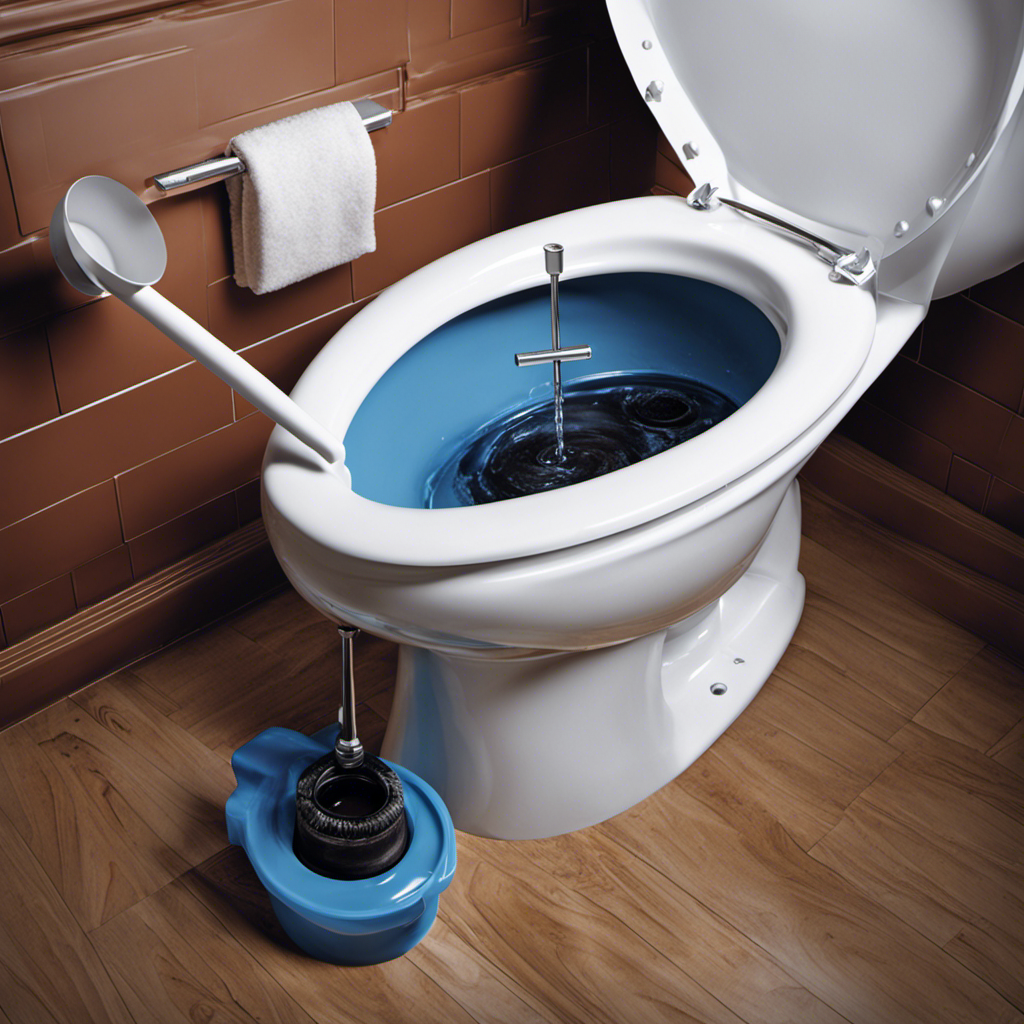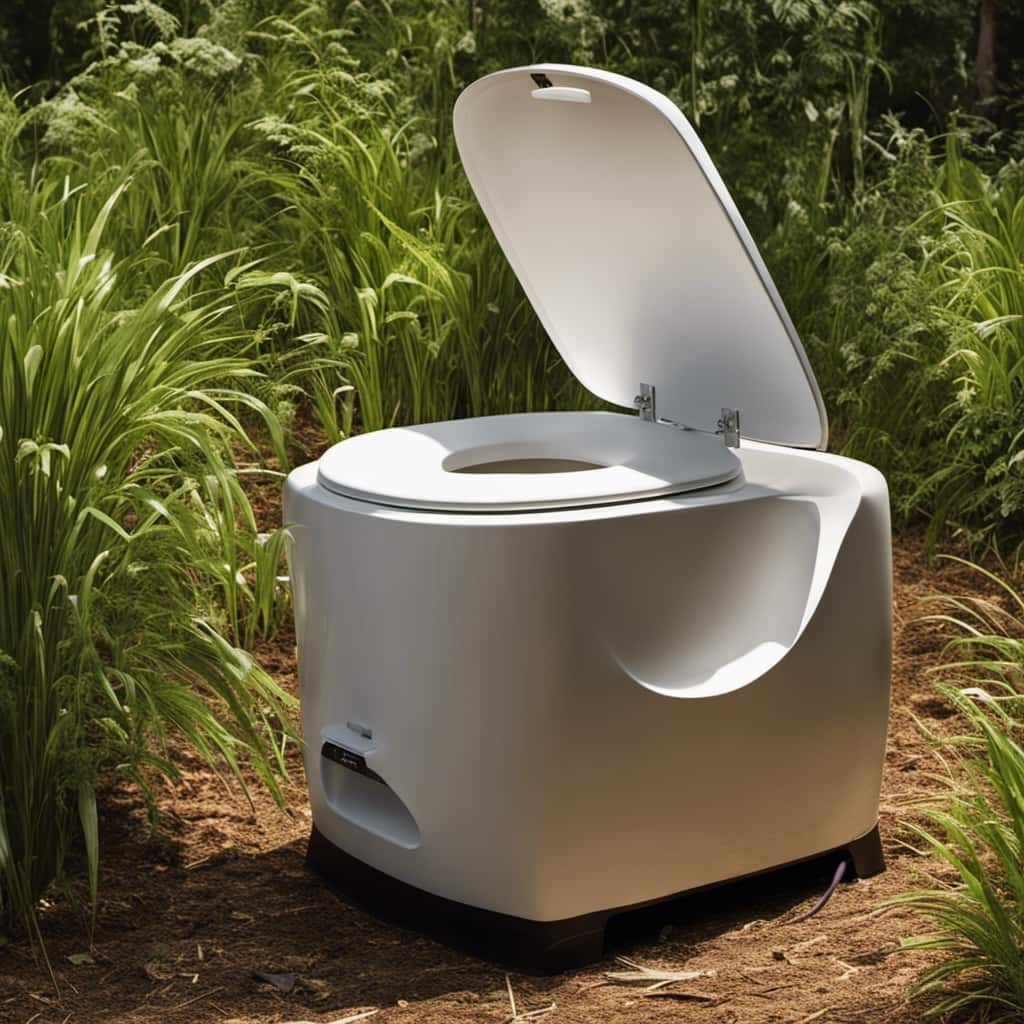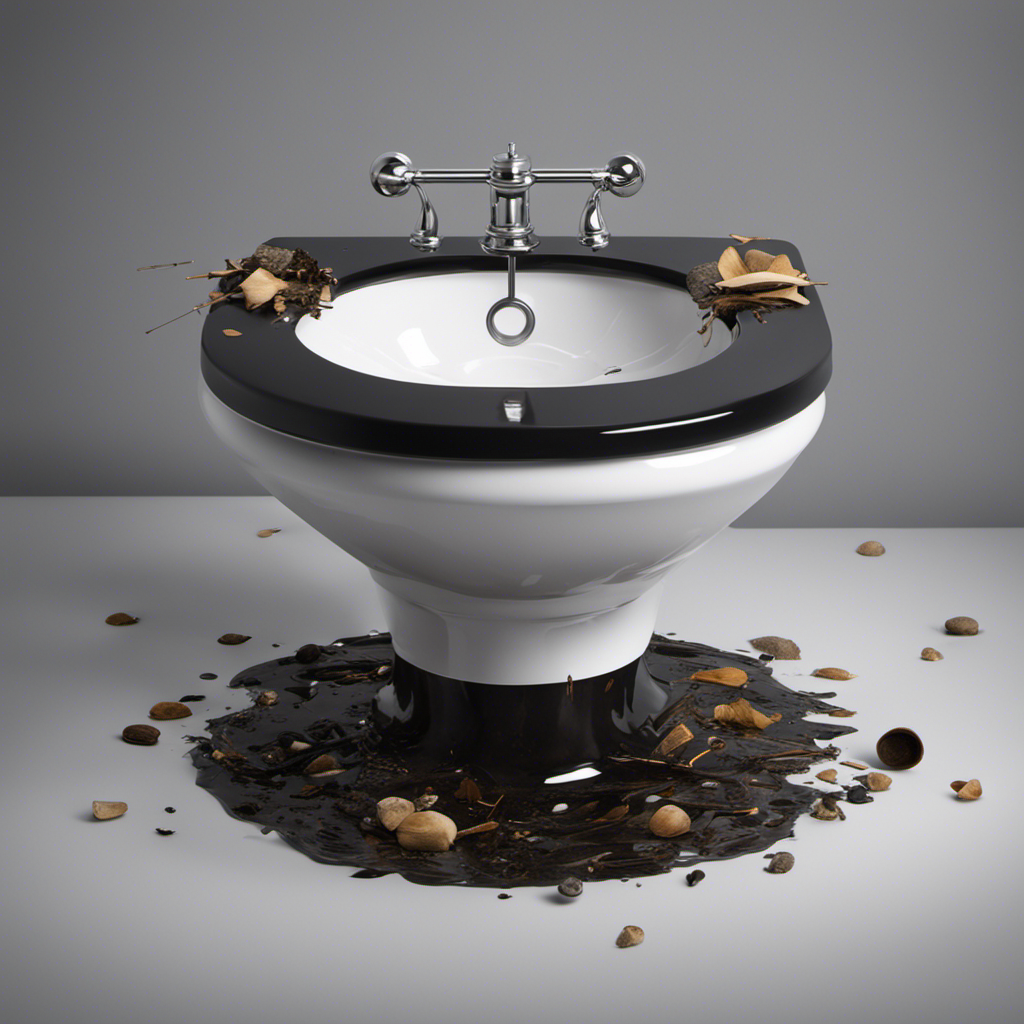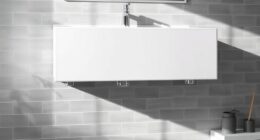Are you tired of dealing with a stopped up toilet? Well, look no further because we have the solution for you!
In this article, we will guide you step-by-step on how to fix a clogged toilet. With just a few tools and some simple instructions, you’ll be able to unclog your toilet and get back to your daily routine in no time.
So, let’s dive in and learn how to tackle this common household issue like a pro.
Key Takeaways
- Common causes of a clogged toilet include excessive toilet paper, flushing inappropriate items, hard water mineral accumulation, and tree root infiltration.
- Tools and materials needed to fix a clogged toilet include a plunger with a flange, bucket, rubber gloves, plumbing snake, and chemical drain cleaners.
- Steps to unclog a toilet include ensuring enough water in the bowl, using a plunger to create a tight seal and plunging multiple times, using a toilet auger for stubborn clogs, and flushing to check for smooth flow.
- Preventive measures to avoid future clogs include regular inspection and maintenance, proper toilet cleaning, avoiding harsh chemicals, educating household members on proper disposal methods, and disposing of items in the trash.
Common Causes of a Clogged Toilet
One common cause of a clogged toilet is flushing excessive amounts of toilet paper. Toilet paper is designed to dissolve in water, but if you use too much, it can build up and create a blockage in the pipes.
When this happens, you will need to take action to unclog the toilet. There are a few methods you can try, such as using a toilet plunger or chemical drain cleaners. A plunger creates pressure that can push the blockage through the pipes, while chemical drain cleaners dissolve the clog. Both methods have their pros and cons, so it’s important to choose the one that suits your situation best.
Now, let’s move on to the tools and materials you will need to fix your stopped up toilet.
Tools and Materials You Will Need
To fix the clogged toilet, you’ll need a plunger, a bucket, rubber gloves, and a plumbing snake. These tools and materials are essential for tackling the blockage effectively.
The toilet plunger is designed specifically for unclogging toilets and should be your first line of defense. It creates suction and pressure to dislodge the obstruction. Make sure to choose a plunger with a flange, as it provides a better seal.
The bucket is necessary to hold the water that will be displaced during the plunging process. Rubber gloves are essential for hygiene and protection.
Lastly, the drain snake is a flexible tool that can reach deeper into the drain to remove stubborn clogs. It is particularly useful when the plunger fails to clear the blockage.
With these tools in hand, you’ll be well-equipped to tackle any clogged toilet situation.
Step-by-Step Guide to Unclogging the Toilet
Using a plunger is an effective way to unclog a toilet. It works by creating suction and pressure to dislodge the obstruction.
To start, make sure there is enough water in the bowl to cover the plunger head. If there isn’t enough water, add some to increase the effectiveness of the plunging action.
Next, place the plunger over the drain hole and firmly push down to create a tight seal. Then, quickly pull up on the plunger to create suction. Repeat this plunging motion several times, applying steady pressure.
If the clog is stubborn and the plunger isn’t working, you may need to use a toilet auger. Insert the auger into the drain hole and rotate it while applying gentle pressure.
Once the clog is cleared, flush the toilet to ensure everything is flowing smoothly. It’s important to remember that proper toilet troubleshooting and DIY toilet repairs can save you time and money.
Preventive Measures to Avoid Future Clogs
Make sure you regularly maintain your plumbing system to prevent future clogs. Here are some key steps to take in order to keep your toilet in proper working condition:
-
Conduct regular inspections of your toilet to check for any signs of leaks or damage. This will help you catch any potential issues before they escalate.
-
Practice proper toilet maintenance by cleaning it regularly and using appropriate cleaning products. Avoid using harsh chemicals that can damage the pipes.
-
Educate yourself and your household members on proper disposal methods. Ensure that only waste and toilet paper are flushed down the toilet, while items like baby wipes, feminine products, and paper towels are disposed of in the trash.
When to Call a Professional Plumber
If you notice persistent leaks or unusual sounds coming from your plumbing system, it may be time to call a professional plumber. Ignoring these signs of a serious plumbing issue can lead to significant damage and costly repairs down the line. Hiring a professional plumber ensures that the problem is correctly diagnosed and fixed, preventing further damage to your home. While the cost of hiring a professional plumber may vary depending on the complexity of the issue and your location, it is a worthwhile investment to protect your home and avoid potential disasters. Here is a table highlighting some common signs of a serious plumbing issue and the average cost of hiring a professional plumber for different services:
| Signs of a Serious Plumbing Issue | Cost of Hiring a Professional Plumber |
|---|---|
| Persistent leaks | $150 – $350 |
| Unusual sounds | $100 – $250 |
| Slow drains | $80 – $200 |
Conclusion
So there you have it, a step-by-step guide on how to fix a stopped up toilet. By following these instructions, you can confidently tackle this common household issue yourself.
However, some may argue that calling a professional plumber is the better option. While this may be true in more severe cases, with the right tools and a bit of know-how, you can save yourself time and money by handling the clog on your own.
Imagine the satisfaction of successfully unclogging your toilet and the relief of not having to wait for a plumber to arrive. Take charge of your plumbing problems and become the hero of your household!










